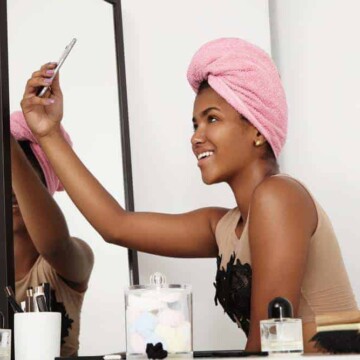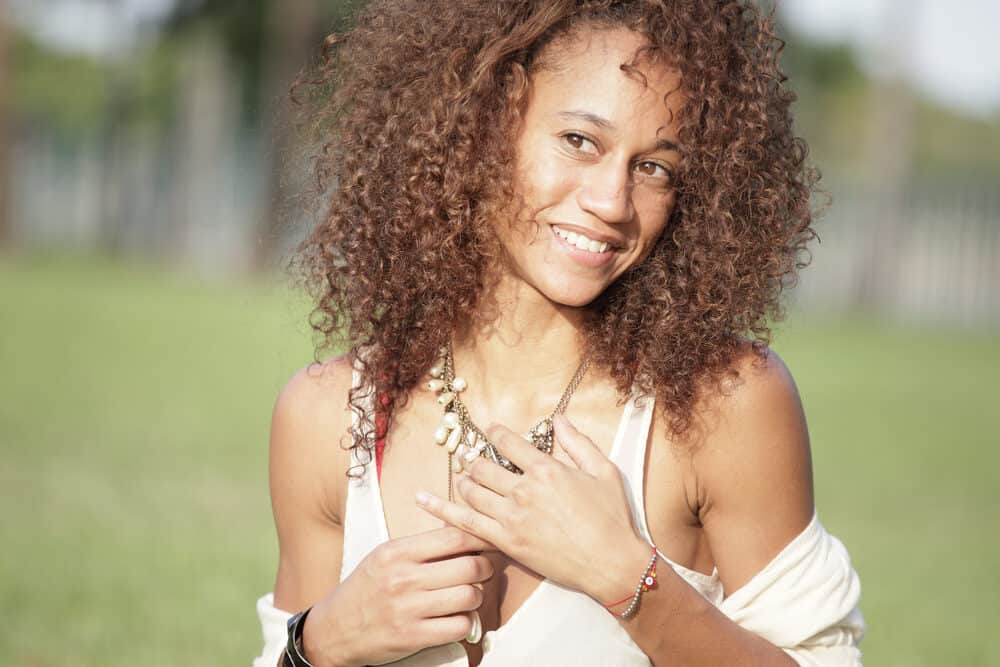
If you have ever wondered why your hair feels waxy, you're certainly not the only one. Waxy hair can prevent you from feeling and looking your best - it may even indicate a serious underlying condition.
This article will look at some of the most common causes of oily, greasy, and waxy hair and their potential solutions.
Table of Contents
- 1 Why Does My Hair Feel Waxy? 8 Reasons
- 2 Key Takeaways
- 3 Get Rid of Waxy Hair Fast
- 4 Frequently Asked Questions
- 4.1 How Do You Get Rid of Waxy Hair?
- 4.2 Why Does My Hair Not Feel Clean After I Wash It?
- 4.3 Why Is My Hair Clean but Feels Sticky?
- 4.4 Why Does Shea Moisture Make My Hair Feel Waxy?
- 4.5 Why Does My Hair Feel Waxy After Drying?
- 4.6 Why Does My Hair Feel Waxy When Wet?
- 4.7 Why Does My Hair Feel Waxy After Conditioner?
- 4.8 Why Does My Hair Feel Waxy After Bleaching?
- 4.9 Related Articles
Why Does My Hair Feel Waxy? 8 Reasons
Your hair feels waxy primarily due to product buildup. Silicones, polymers, and oils make a waterproof layer on each strand of hair. Also, certain factors increase oil production on your scalp. Examples include hormonal imbalances, skin conditions, certain medications, and environmental pollutants.
This contributes to the waxy texture. With its high mineral content, hard water can also leave a residue. Even daily stress can affect sebum levels in your hair. Improper washing methods can worsen the issue. For example, not rinsing thoroughly leaves residue on your hair strands.
The first step in getting rid of waxy hair is pinpointing what might be causing it. Several factors could cause that waxy gunk on your strands, and we’ll look at them below. Let’s get right into it.

- Product buildup. Hairstyling products can collect on your hair and leave behind a waxy residue. Product ingredients like silicones, polymers, and oils are water-resistant and cling tightly to each strand of hair. This buildup can make your hair feel waxy, brittle, or greasy even after washing.
- Health issues. An underlying medical condition might be the culprit behind the waxy buildup on your hair. Common causes include:
- Hormonal imbalances
- Skin conditions
- Fungal or bacterial infections
- Certain medications. Some medications can cause your hair to become waxier. Medications like steroids, blood thinners, and birth control can cause your body to produce too much oil. This excess oil coats your hair, making it feel stiff or waxy.
- Damaged hair. Chemical processing and heat can damage your hair cuticles, making them appear dull or waxy. If you have a history of relaxing, bleaching, using heat tools, or coloring and notice a waxy film, it may indicate damaged hair.
- Environmental pollution. When your scalp is exposed to high levels of pollution, it may start secreting more oil to protect itself. Some forms of air pollution can even bind to your hair and cause a waxy film to develop.
- Hard Water. Many homes in America have hard water. Hard water contains high levels of dissolved minerals like calcium and magnesium. These minerals can collect on your hair and leave behind a residue that feels waxy or sticky.
- Stress. Stress impacts nearly every part of your body, inside and out. High levels of stress cause your body to produce more of the stress hormone cortisol. Excess cortisol can lead to higher levels of sebum (scalp oil) production, which can produce a wax-like hair coating.
- Improper washing. Washing your hair with piping hot water, not fully rinsing away conditioner or shampoo, and using the wrong type of cleansing products can all contribute to waxy buildup. Doing so could leave products and oils behind or signal your scalp to produce more oils.
Key Takeaways
- Product Build-up & Hair Type: Waxy hair often results from product build-up on the hair strands. Often, these products include leave-in conditioners, dry shampoos, and styling products. To fix these issues, you can use a clarifying shampoo. However, individuals with curly hair should be careful to avoid excessive dryness.
- Impact of Water & Hair Care Products: Hard water can make your hair feel waxy. It happens because of minerals like calcium and magnesium. These minerals build up on your hair. To fix this, you can use a water softener or a filtered showerhead. These options will help maintain your hair's natural oils.
- Diet & Oily Scalp Connection: A diet high in fatty foods can make your scalp oily and your hair waxy. To reduce oil production, eat a healthy diet with less fatty foods.
- Natural Ingredients for Hair Health: To fix dry hair and prevent build-up, use sulfate-free shampoo with natural ingredients. Using heat protectants regularly can prevent damage that causes a waxy texture.
- Medical Conditions & Hair Follicles: Persistent waxy hair might indicate underlying medical conditions affecting the hair follicles. If home remedies fail, seeking medical advice can help identify issues. You could have problems with sebaceous glands or other scalp-related conditions.
Get Rid of Waxy Hair Fast
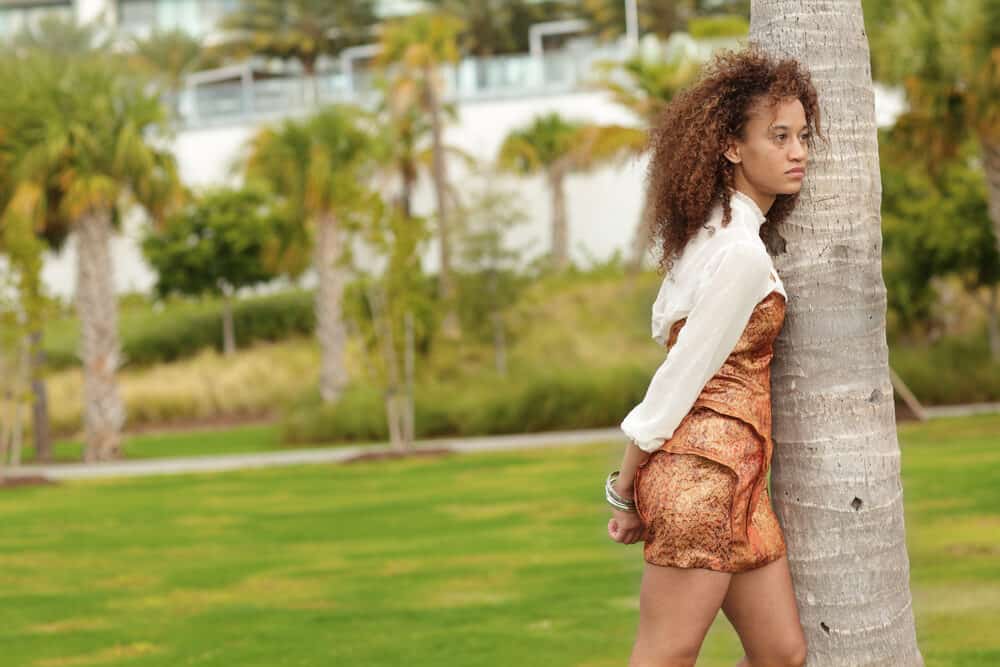
Not only is waxy hair unpleasant to touch and look at, but the buildup prevents water from penetrating your hair. As a result, you may find your hair becoming more dry, brittle, and prone to breakage. Here are a few different ways to address waxy hair.
Use a Clarifying Shampoo
Clarifying shampoos, also called purifying or deep cleansing shampoos, are among the most effective ways to treat waxy hair (or greasy hair).
They are specifically designed to cut through product buildup and leave behind hair that is soft and clean. Because they’re much stronger than regular shampoo, they are usually used only once or twice a month to remove significant buildup.
Note: Clarifying shampoo can be used more frequently on straight or fine hair because the scalp's natural sebum is more likely to "coat" the entire hair strand. However, if you have wavy or curly hair, monitor your usage of clarifying shampoo very carefully. For textured hair types, too frequent hair washes can lead to excessive dryness.
Change Your Diet
Healthy hair starts from the inside out. Unhealthy and fatty foods can cause your scalp to produce excess oil (sebum) that leads to a waxy buildup.
Avoiding junk food, getting enough water, and eating more healthy fruits and vegetables can help your body better regulate its sebum production.

Change Your Hair Products
If your hair products are leaving behind a waxy film, you should consider using fewer products or switching them out entirely. When applying hair products, remember that less is usually more.
Use only the recommended amount, usually a coin-sized dollop, to prevent unnecessary product buildup. You can also switch to lighter, water-based formulas and avoid additives like silicone, petroleum, heavy oils, and wax.
Wash Your Hair More Thoroughly
The first step to shampooing properly is to make sure your hair is fully saturated with water. Once your hair is soaking wet, apply shampoo to your entire scalp and crown and gently massage it with your fingertips.
If you use a lot of leave-in products, you may want to consider shampooing your hair twice in a row. When you move onto your conditioner, focus on the mid-lengths and ends of your hair.
Your scalp doesn’t actually need conditioner because it produces its own oils. Most importantly, pay extra attention and don’t rush through rinsing your hair. You want to make sure you’re removing as much shampoo and conditioner as possible.
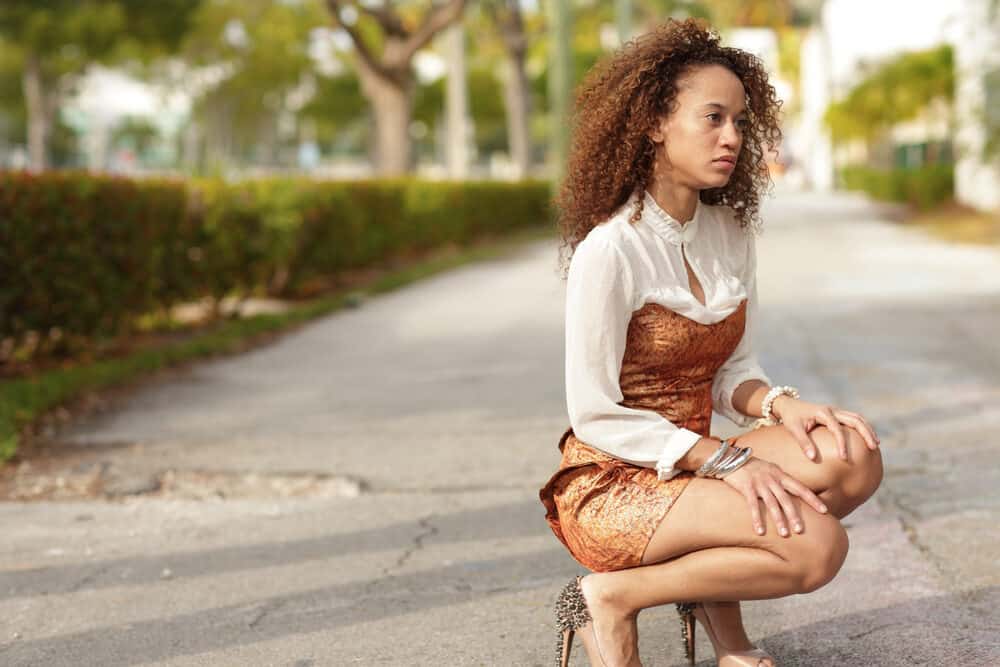
Get a Filtered Showerhead
If you think hard water is the culprit behind the waxy buildup on your hair, consider installing a filtered showerhead.
The filter will trap or neutralize the buildup-promoting minerals before they have a chance to settle on your hair. Over time, you’ll notice an improvement in the look and feel of both your hair and skin.
Try a DIY Treatment
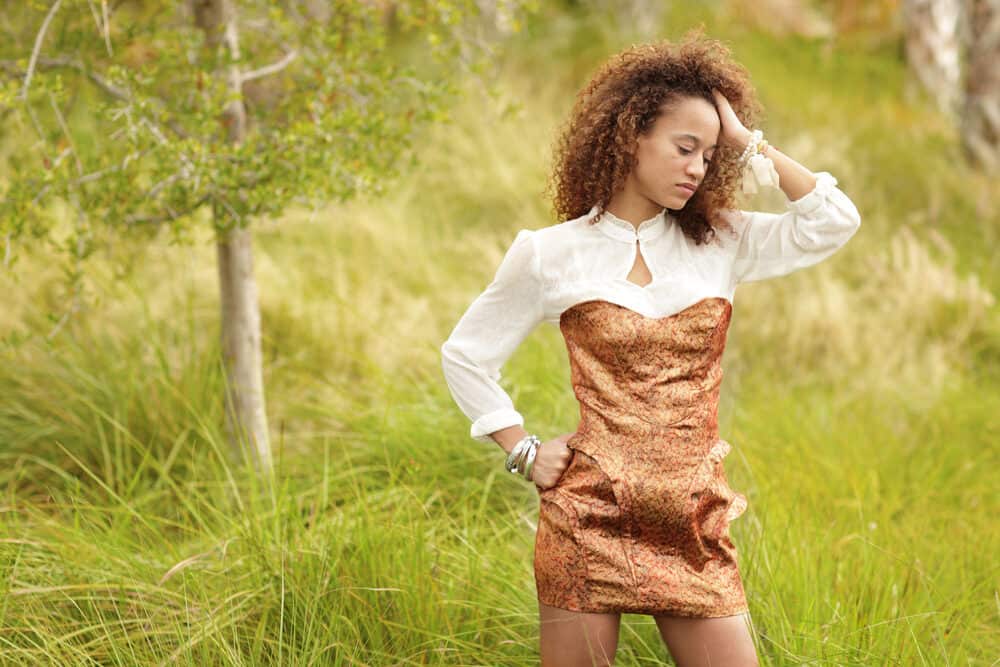
DIY treatments can be an affordable and gentle way to address waxy buildup. Here are some of the more popular and effective treatments for waxy hair.
- Baking soda rinse. Baking soda is made up of a naturally clarifying compound called sodium bicarbonate. To use baking soda as a hair treatment:
- Mix 2 parts baking soda with 1 part water.
- Saturate your hair with warm water and spread the paste over your hair in a thick layer.
- Leave the paste on for up to half an hour before rinsing your hair thoroughly with warm water.
- Shampoo and condition your hair as normal.
- Apple cider vinegar rinse. Due to its acidic nature, vinegar is able to cut through waxy buildup. Because apple cider vinegar is antimicrobial and anti-inflammatory, it can also treat the root cause of your waxy buildup. To do an apple cider vinegar hair rinse:
- Mix 2 parts water to 1 part apple cider vinegar.
- After shampooing, saturate your hair and scalp with the vinegar solution by pouring it on or using a spray bottle.
- Let the mixture sit on your hair for up to five minutes before rinsing thoroughly.
- Follow up with your normal conditioner, and style your hair as usual.
- Dish soap. Dish soap is known for its ability to cut through tough grease and waxy buildup. To give it a try:
- Apply a quarter-sized dollop of dish soap to soaking wet hair and work it into a lather.
- Once your hair is sufficiently lathered, rinse the soap off with warm water and follow up with your preferred conditioner.
- You may want to use a deep conditioner or let your normal conditioner sit for an extra 10 minutes to help compensate for any moisture loss.
Note: Dish soap can be extremely drying and strip your hair of its natural oils. Only use this method if you have a stubborn buildup that resists the other methods, and do not use this method more than once a month. Click here to learn more about how to use dish soap within your natural hair regimen.
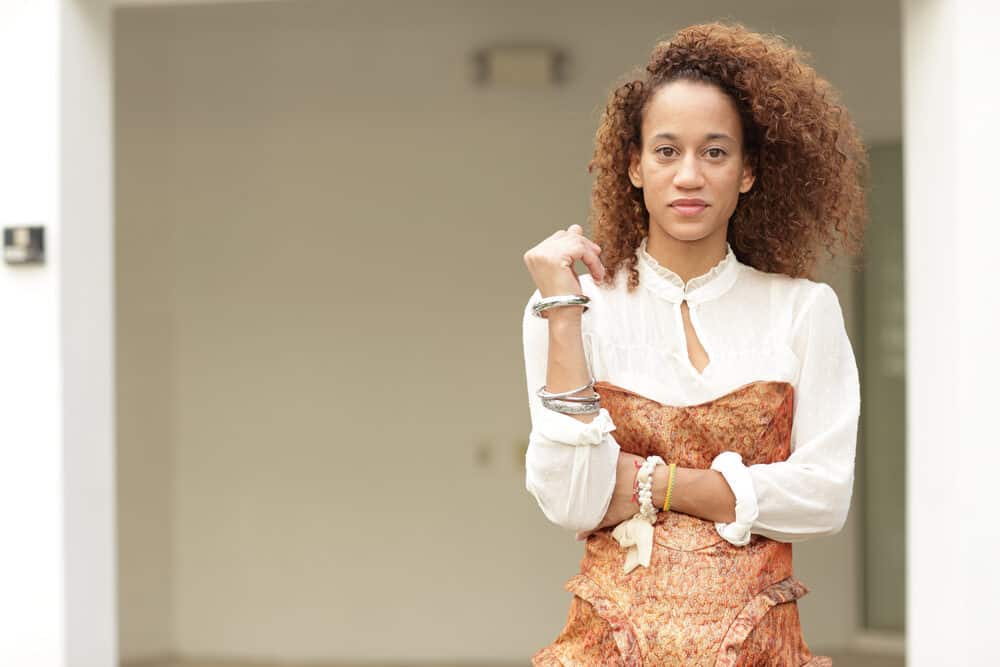
Seek Medical Advice
If your waxy buildup is caused by a medical condition, like seborrheic dermatitis or psoriasis, your best course of action is to contact a qualified medical professional.
Reach out to a dermatologist, a trichologist, or your general practitioner to help identify and treat the cause of your waxy buildup.
Frequently Asked Questions
Welcome to our FAQ section. Here, we answer common questions about waxy hair. You'll find simple answers that help you manage and improve your hair's texture and health.
How Do You Get Rid of Waxy Hair?
To remove waxy hair, use a clarifying or natural shampoo designed to cut through excess oils and product buildup. These shampoos cleanse the hair shaft deeply, removing waxy, greasy residues. Regularly washing with a suitable shampoo can get rid of waxy feeling hair. You can also incorporate baking soda or apple cider vinegar rinses into your routine. Also, avoid heavy styling products and sparingly use dry shampoo to prevent future buildup.
Why Does My Hair Not Feel Clean After I Wash It?
If your hair doesn't feel clean after washing, it's likely due to product buildup or the use of waxy ingredients in your hair care products. Residues from styling products or insufficient rinsing can leave your hair feeling unclean. To combat this, consider using a clarifying shampoo to remove buildup. Also, ensure thorough rinsing to maintain scalp health.
Why Is My Hair Clean but Feels Sticky?
Clean hair that feels sticky is often a sign of residue from hair care products or hard water minerals. Sticky, waxy hair after washing can occur if the hair care products don't fully rinse out, leaving a film on the hair shaft. A clarifying shampoo can help remove these residues, and using a water softener can mitigate the effects of hard water.
Why Does Shea Moisture Make My Hair Feel Waxy?
Shea Moisture products may make your hair feel waxy due to their rich, moisturizing ingredients. While beneficial for dry, curly, or natural hair, these ingredients can sometimes leave a residue, especially on fine or oily hair types. To reduce this waxy feeling, use less product. Then, thoroughly rinse after application or alternate with a clarifying shampoo to remove buildup.
Why Does My Hair Feel Waxy After Drying?
Your hair may feel waxy after drying due to excess oils or remnants of hair care products. This waxy, greasy hair after washing can result from improper rinsing or overuse of styling products. Using products that are too heavy for your hair type is also common. Clarifying shampoos and adjusting your hair care routine can help address this issue.
Why Does My Hair Feel Waxy When Wet?
Hair feeling waxy when wet is often an indicator of product buildup or the presence of hard water minerals. These factors can coat the hair shaft, leaving a waxy residue even when wet. To address this, use a clarifying shampoo to remove buildup and consider installing a water softener to filter out minerals.
Why Does My Hair Feel Waxy After Conditioner?
A waxy feeling after using conditioner can occur if the product is too heavy for your hair type or isn't thoroughly rinsed out. This can leave a residue that coats the hair shaft. To avoid waxy, sticky hair after washing, opt for lighter conditioners, apply them only to the ends of your hair, and rinse thoroughly.
Why Does My Hair Feel Waxy After Bleaching?
Hair feeling waxy after bleaching can result from damage caused by the bleaching process. Bleaching can strip natural oils and moisture, leading the scalp to produce excess oils to compensate. This can leave a waxy residue on the hair shaft. Use a nourishing shampoo and conditioner, along with regular deep conditioning treatments. This routine can help restore hair health and reduce the waxy feeling.
- How To Keep My Natural Hair Straight in Humidity
- Low Poo Method for Curly Hair
- How Often Should You Wash Your Hair With Shampoo
- Best Pre-poo Routine for Natural Hair
Waxy buildup on your hair can be unpleasant and lead to significant hair damage over time. Luckily, it’s rarely permanent and can usually be prevented by making small changes to your hair care routine.
We hope this article has provided you with the tools needed to identify and treat the causes of your waxy hair.




